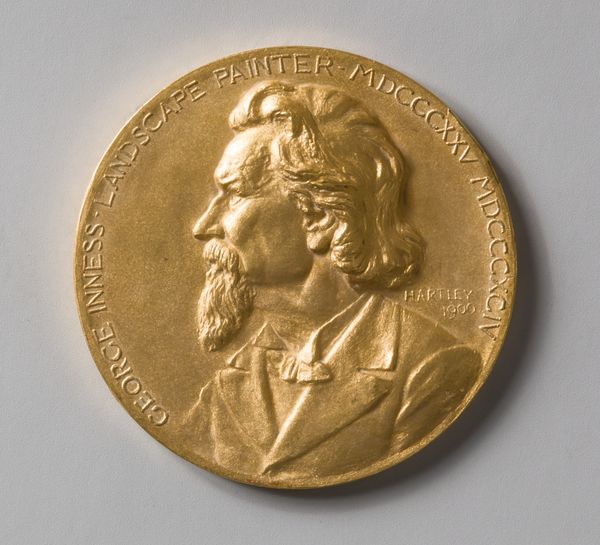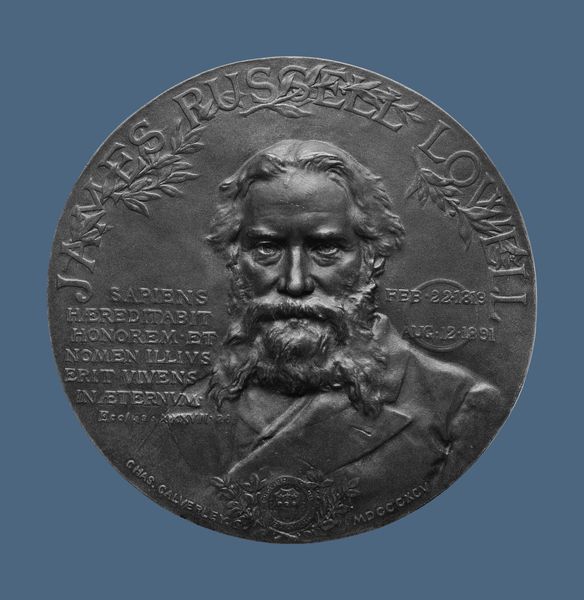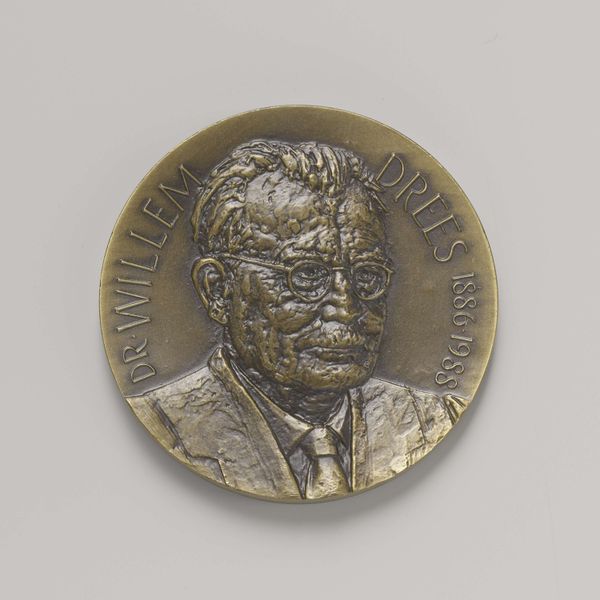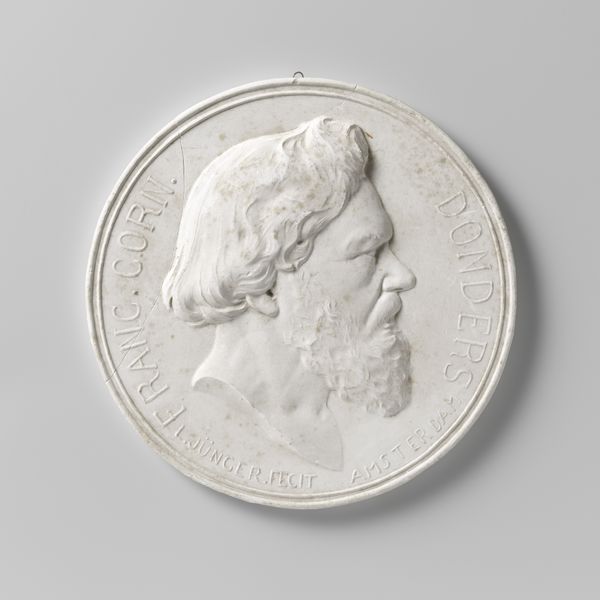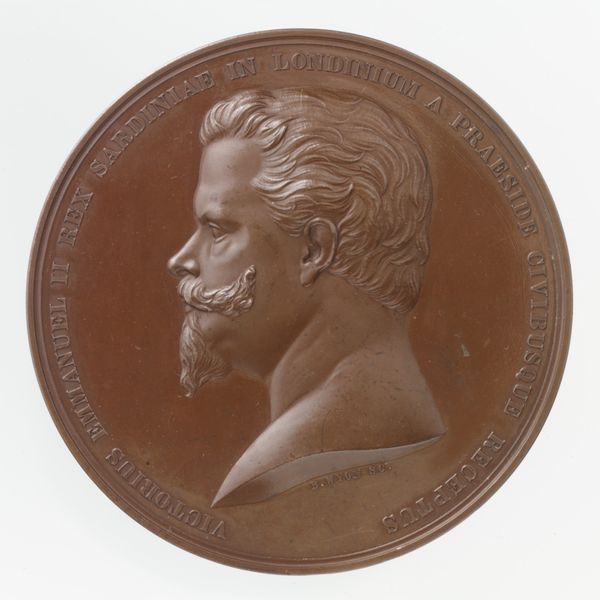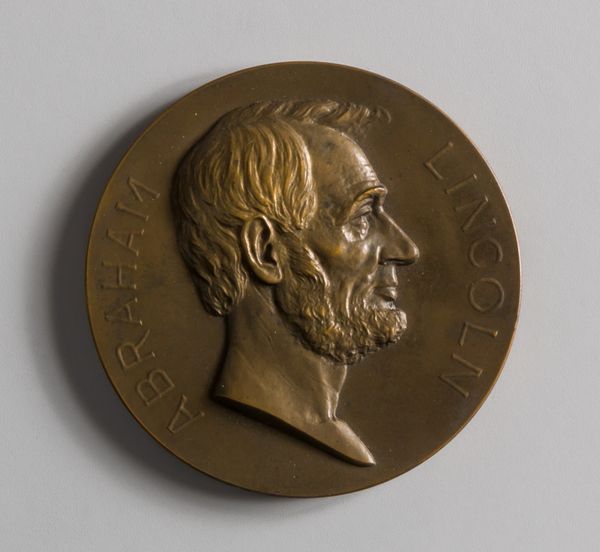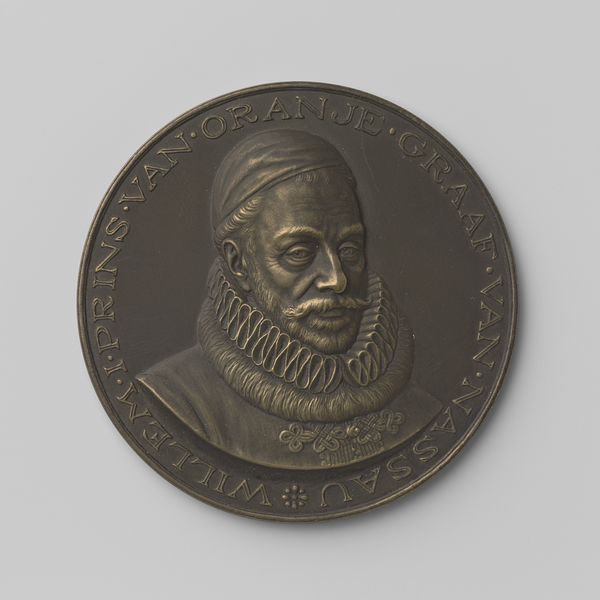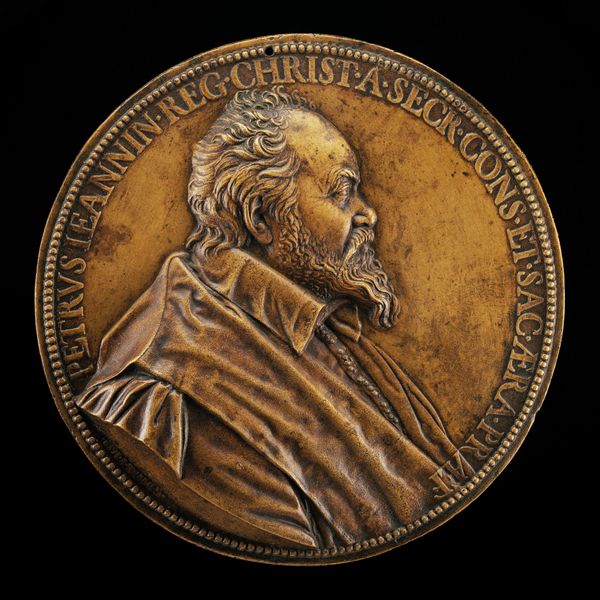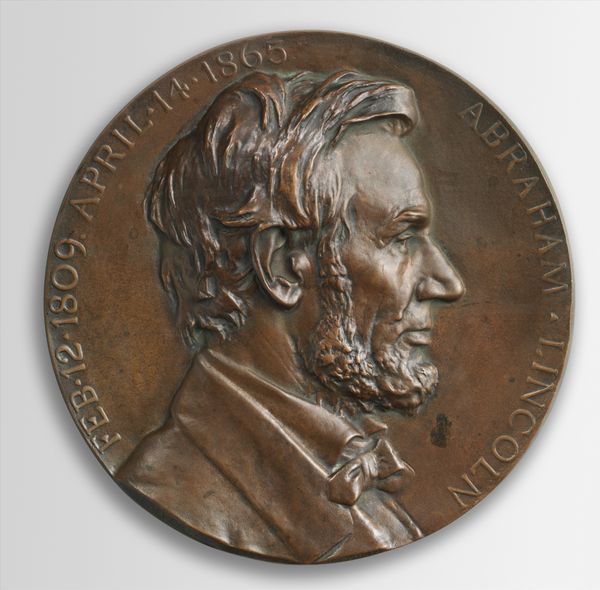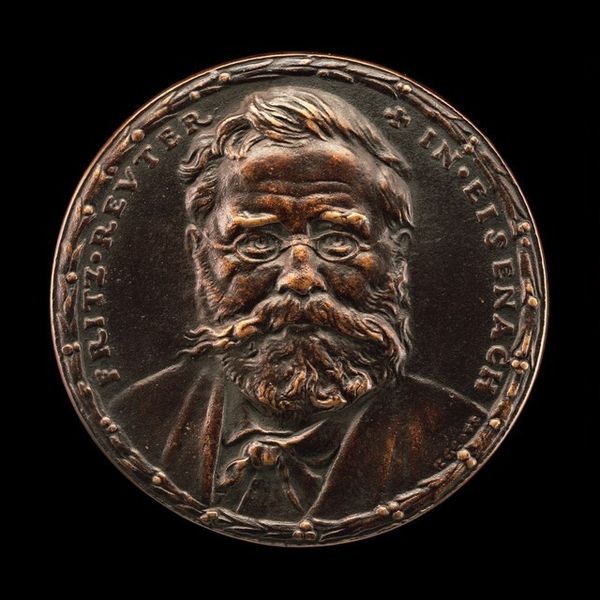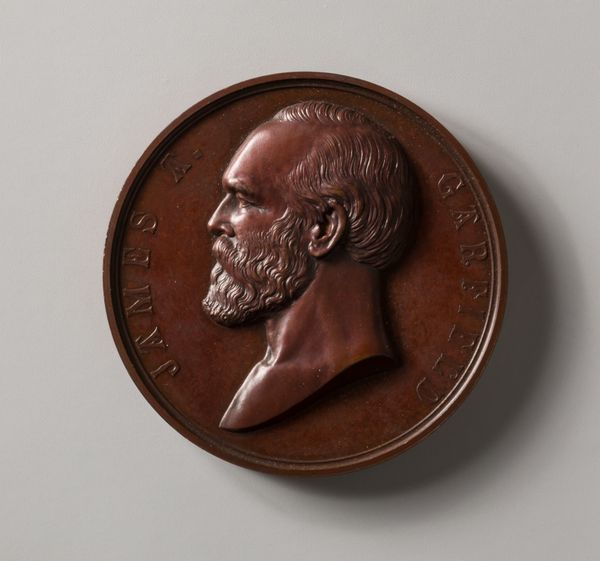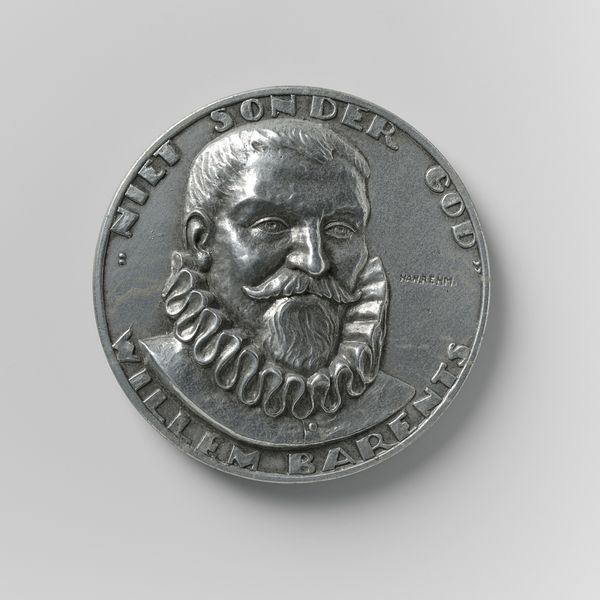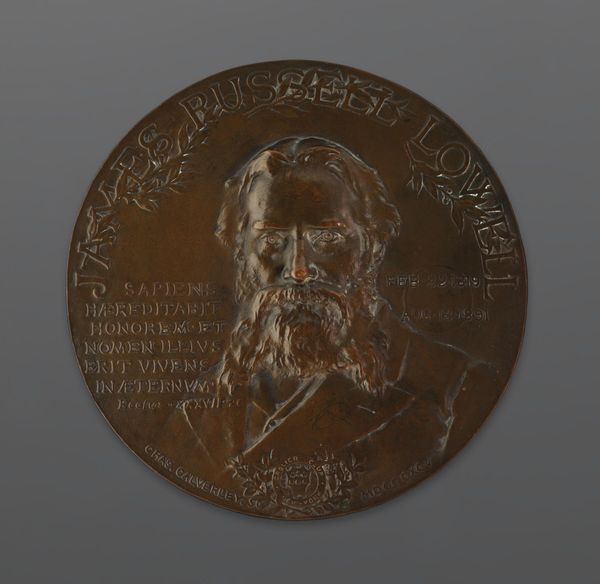
metal, relief, bronze
#
portrait
#
metal
#
relief
#
bronze
#
academic-art
Dimensions: diameter 7.6 cm, weight 219.20 gr
Copyright: Rijks Museum: Open Domain
Curator: Editor: Here we have "Honderdjarig bestaan van de firma S.E.L. Maduro & Sons te Curaçao 1937," a bronze relief from 1937, created by Onorio Ruotolo. It seems very formal, like something commemorating a historical event. How do you interpret this work? Curator: It's more than just formal; it's a potent symbol of power and legacy. We need to consider the historical context: the centennial of a company in Curaçao, deeply entwined with the island's economic and social structures. Who was included in this commemoration, and who was notably absent? Does this relief offer a singular narrative, or do the symbols complicate its meaning? Editor: I see your point. The relief depicts the founder, but doesn't show the broader impact of the company. The anchor and waves around his portrait feel like nods to trade and movement, but without acknowledging potential colonial implications. Are we meant to only admire the success of S.E.L. Maduro & Sons? Curator: Exactly. The uncritical representation of success can erase the often exploitative conditions upon which such fortunes are built. The artist's style, rooted in Academic art, further emphasizes the need for deeper examination. Did Ruotolo intend to celebrate uncritically, or might the relief contain subtle ironies that complicate our understanding? Editor: That's a crucial question. It challenges us to look beyond the surface and investigate the relationship between the company's history and the social realities of Curaçao at that time. What was Curaçao's political landscape like then? Curator: Precisely. Approaching the relief this way reveals how seemingly straightforward commemorative art can actively obscure broader, more critical understandings of history. It pushes us to ask: Whose stories are being told, and whose are being deliberately left out of this commemorative narrative? Editor: It gives me a lot to think about. Thanks, it really highlights the importance of considering an artwork's social and historical context to truly understand its implications.
Comments
No comments
Be the first to comment and join the conversation on the ultimate creative platform.
